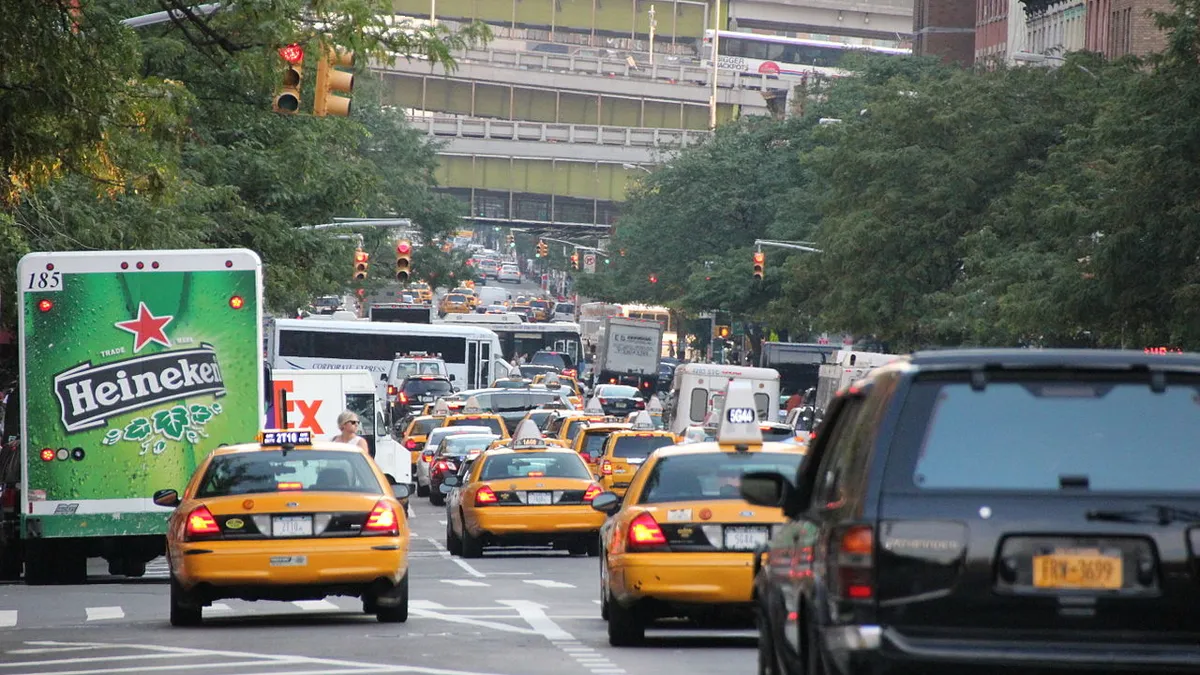Dive Brief:
- U.S. traffic is getting worse and if left unchecked, bottlenecks in the nation's 25 most congested cities will cost commuters $295 billion over the next decade, according to a study by transportation analytics company Inrix.
- The cities with the greatest financial impact from traffic "hotspots" — or sections of road that repeatedly experience traffic jams — are Los Angeles, New York, Washington D.C., Atlanta and Dallas.
- Inrix calculated the cost to commuters based on 100,000 traffic hotspots in the 25 most congested cities in March and April this year. It analyzed lost time, wasted fuel and carbon emitted to determine the total cost.
Dive Insight:
Traffic congestion is a growing problem in U.S. cities that actually has an answer: keep adding more vehicle travel lanes to roadways to increase capacity. But that option generally isn't practical on a number of levels, two of them being the expense and space constraints. Instead, cities are tackling the issue with alternative measures such as variable speed limits, high-occupancy toll lanes or opening roadway shoulders for travel during peak traffic times. Some cities even promote alternatives like making communities more pedestrian- and cyclist-friendly or encouraging commuters to work from home.
The Inrix study not only calculated the cost to commuters for the tangible effects of traffic jams — such as burned fuel — but also for the intangible elements like time. Commuters' time spent in traffic was factored in, as was other wasted time that can indirectly drive up costs, such as stores bumping up the price of goods that get delayed by traffic jams during transport. The cities with the most severe hotspots experience the greatest commuter financial burden.
Inrix suggests that cities can combat congestion by carefully analyzing traffic hotspots and determining their root causes, then investing in targeted solutions. General, large-scale solutions that don't take into consideration individual hotspot causes don't always work, and they might even increase traffic jams. Tolls, for example, often appear to be an easy solution, but they don't increase roadway capacity and actually can create delays of their own. Negative outcomes from traffic improvement projects, in addition to funding difficulties, are among the factors prompting Inrix to encourage cities to perform thorough cost-benefit analyses before launching such projects. But without any attempts at solutions whatsoever, commuters will be paying a hefty price by 2026.












